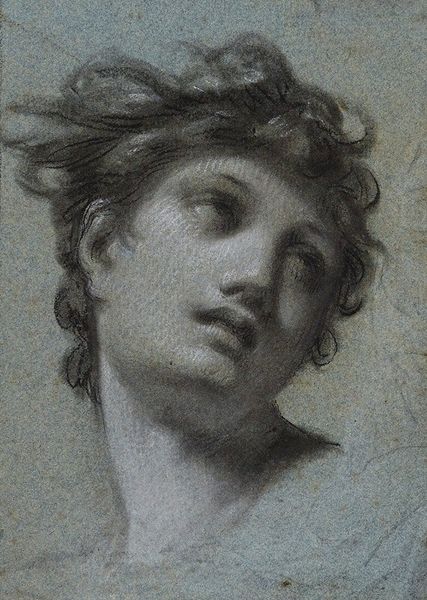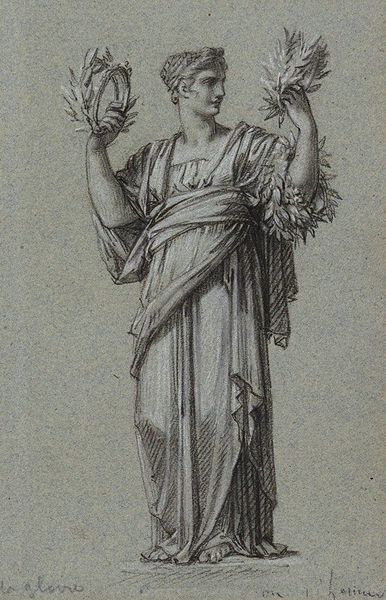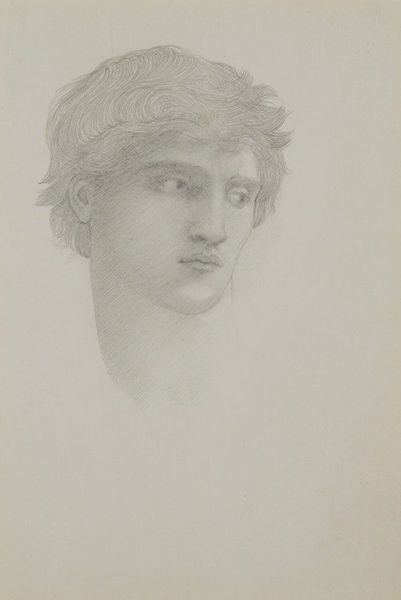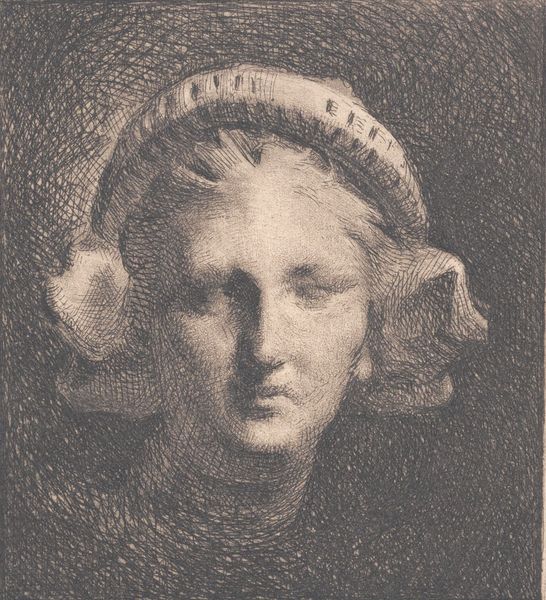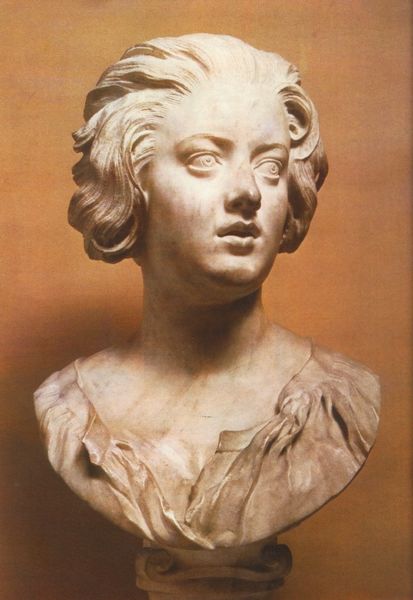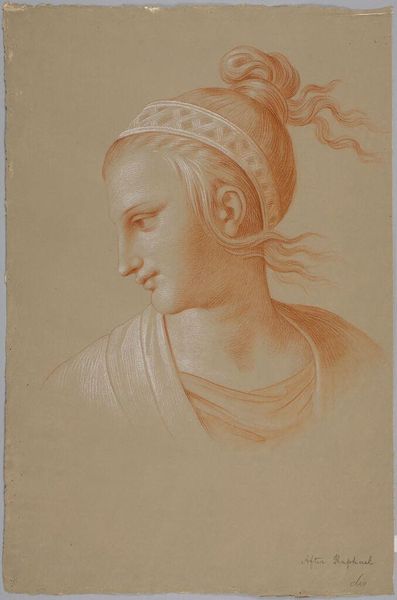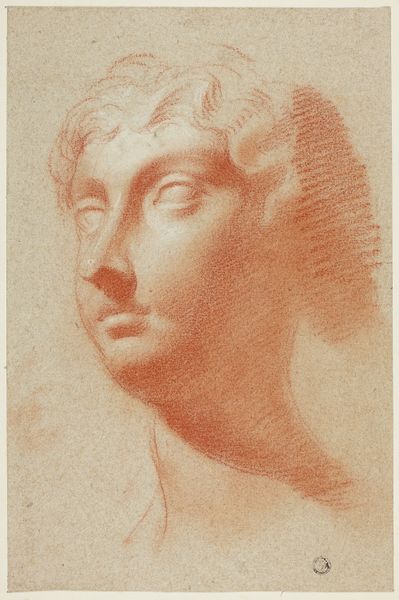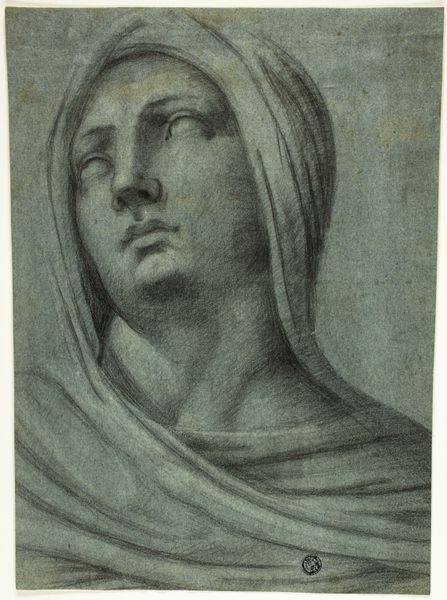
drawing, pencil, charcoal
#
portrait
#
drawing
#
neoclacissism
#
charcoal drawing
#
portrait reference
#
pencil
#
charcoal
Copyright: Public Domain: Artvee
Editor: Here we have Pierre-Paul Prud'hon's "Head of a Muse," made with charcoal and pencil. I’m really drawn to the soft, almost dreamlike quality of the lines. How do you interpret this work? Curator: This drawing encapsulates Neoclassical ideals but also hints at the emerging Romantic sensibility. Consider the historical context. Prud'hon worked during the French Revolution and the rise of Napoleon. The figure's idealized features and serene expression hark back to classical antiquity, but it is filtered through the lens of revolution, empire and changing values, creating a more nuanced conversation. The use of a "muse" could be about seeking inspiration, which could be interpreted as escapism, but also a reaching forward. Editor: So, it's not just a beautiful drawing; it reflects a society grappling with massive change. The muse is almost like a symbol of that? Curator: Exactly. Prud'hon positions the female figure and female artistry in complex relationship to empire. She can inspire, but she can also be manipulated or ignored. What kind of person gets to be a 'muse'? Who is elevated as an ideal, and why? The questions surrounding representation, specifically those impacting women, and how power intersects with visual expression become relevant. Editor: That gives me a lot to consider, especially regarding the power dynamics present, even in what seems like a straightforward portrait. Curator: It's precisely that tension that makes it so compelling, and so relevant. We can use the past to understand how the narratives we create now impact identity, gender, and power. It's exciting, isn't it? Editor: It is. I'll never look at a "simple" drawing the same way again. Thanks for pointing out how relevant a historical work of art is for present society!
Comments
No comments
Be the first to comment and join the conversation on the ultimate creative platform.

